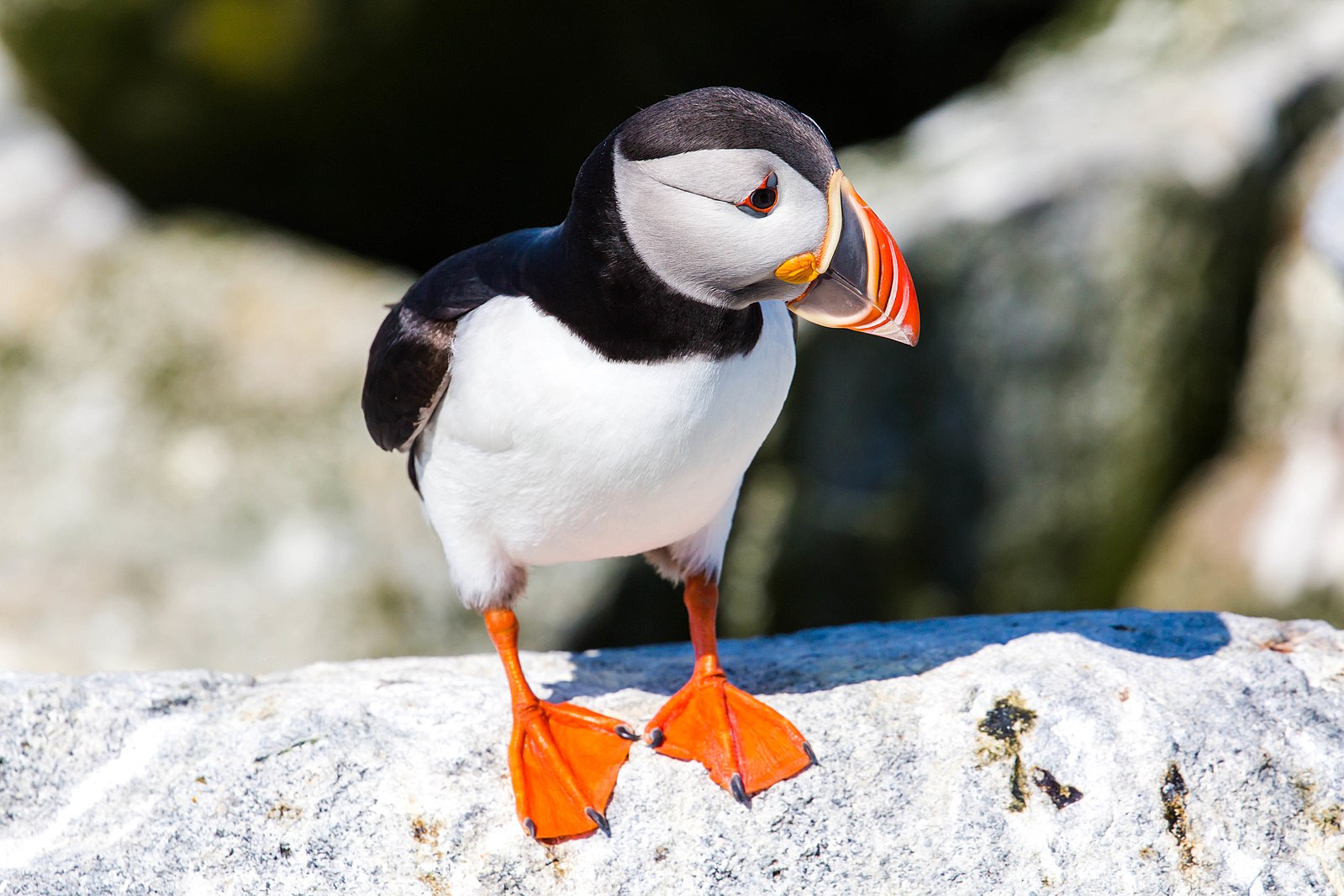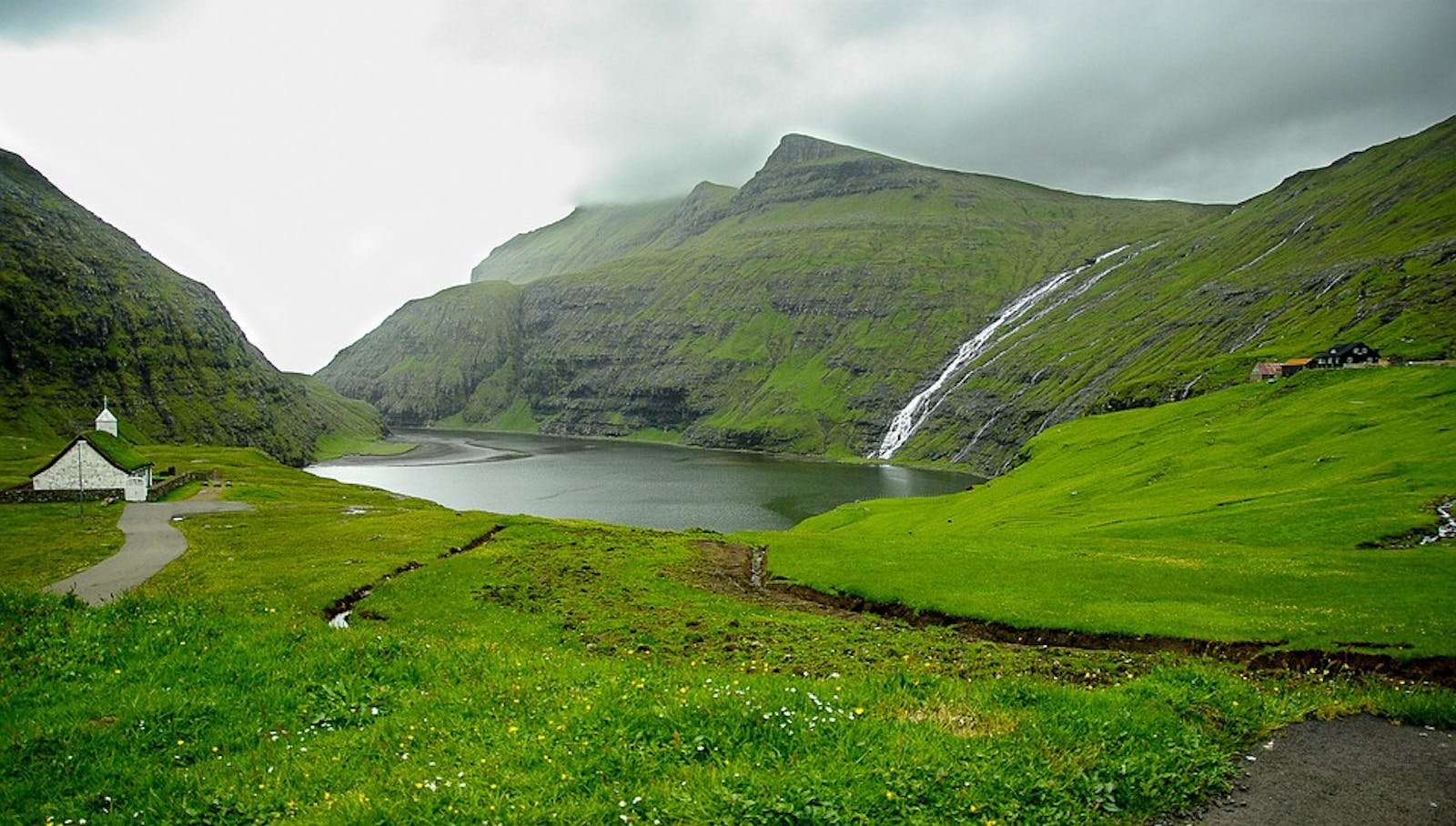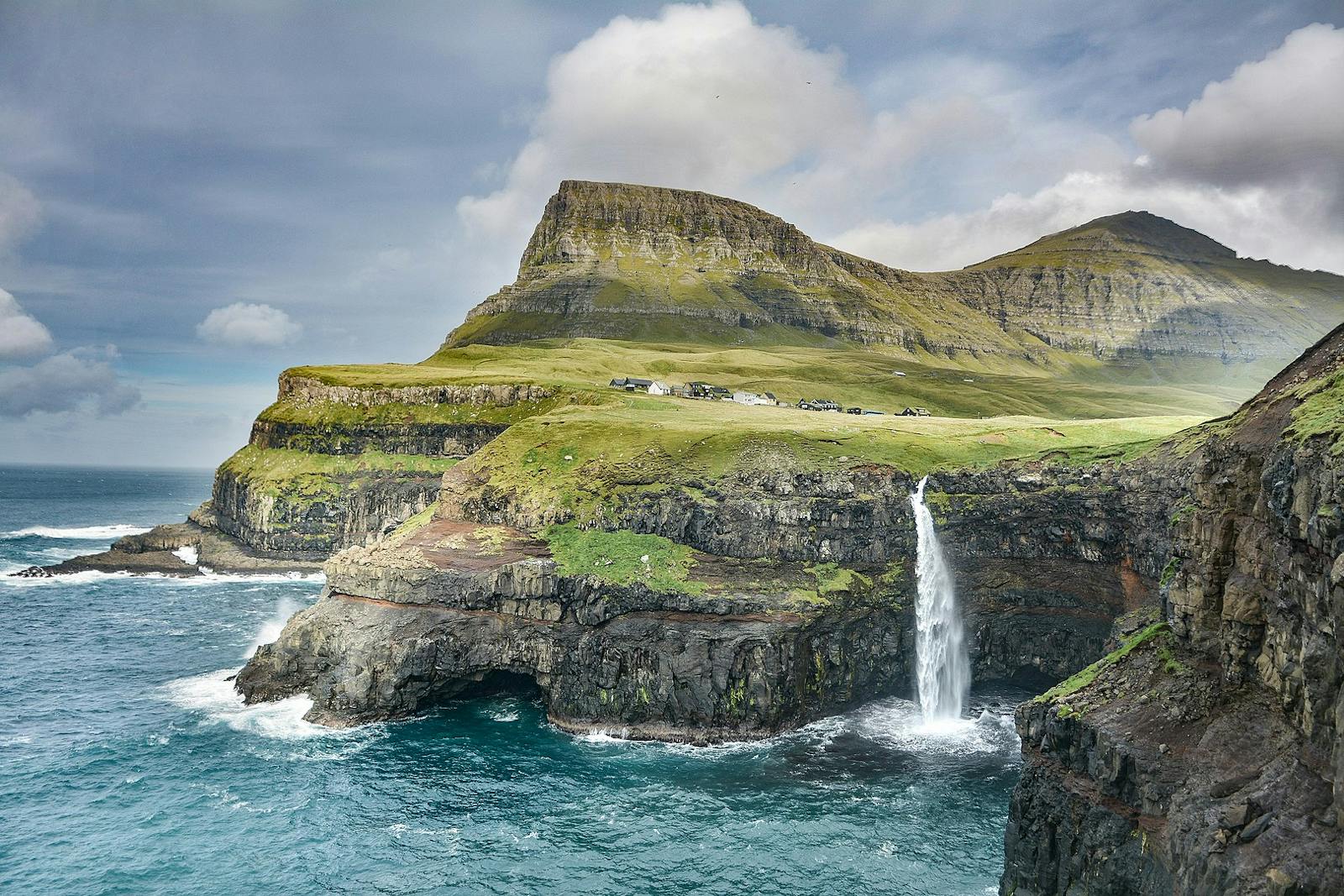Faroe Islands Boreal Grasslands
The ecoregion’s land area is provided in units of 1,000 hectares. The conservation target is the Global Safety Net (GSN1) area for the given ecoregion. The protection level indicates the percentage of the GSN goal that is currently protected on a scale of 0-10. N/A means data is not available at this time.
Bioregion: Great Britain, Ireland & Faroe Islands (PA9)
Realm: Western Eurasia
Ecoregion Size (1000 ha):
145
Ecoregion ID:
729
Conservation Target:
1%
Protection Level:
0
States: Faroe Islands
The rugged, black sea cliffs of this archipelago are painted white by the vast number of breeding seabirds. Approximately 1.5 million pairs of seabirds breed here, found nesting 500 m high up on precarious cliff faces, including the European Storm Petrel that is of global conservation importance. The islands hold approximately 90% (250,000 pairs) of their world’s breeding population. The majority of their food comes from the warm shelf waters abundant with prey. Among the steep, grass-covered slopes, some of the largest colonies of Atlantic puffin can be found nesting in holes they have dug.

The flagship species of the Faroe Islands Boreal Grasslands ecoregion is the Atlantic puffin. Image credit: Melissa McMasters, Creative Commons
The Faroe Islands are an archipelago of 18 mountainous islands, of which only one is uninhabited, located in the North Atlantic Ocean between Scotland, Norway, and Iceland. The islands are characterized by rugged mountains, shaped by glaciers, which are separated by fjords and sounds. The highest mountain peak, Slættaratindur, is 882 m above sea level.
The climate is oceanic and is strongly influenced by the warm North Atlantic current, creating a humid, variable, and windy climate. Summers are cool, with an average temperature of 11°C during the warmest months in the lowlands. Winters are mild with frequent fogs and heavy winds, and during the coldest month, the mean temperature is 4°C in the lowlands. In the coastal areas, the average annual rainfall is 1,000 mm, increasing to more than 3,000 mm in the central regions. The soils are poor in nutrients and are increasingly acidic from the lowlands to the highlands.
This, along with the harsh climate, means vegetation struggles to thrive here. There are no trees on the islands and the predominant vegetation is grassland. Three vegetation zones exist. Below 200 m, moist dwarf shrub heath is dominated by Calluna vulgaris, crowberry, and glittering wood moss. Up to 400 m in the low arctic-alpine zone, moist grassland dominates. Above that in the alpine zone, open grassland and Racomitrium are prevalent. Dwarf willow and alpine bistort can also be found surviving the harsh, arctic climate in this zone.
The Faroe Islands have relatively low species richness and endemism. Terrestrial mammals, mostly introduced by humans, include the mountain hare, mouse, rat, and domesticated sheep. Over 300 bird species have been recorded in the Faroe Islands, 50 of which regularly breed on the islands and 60 are regular visitors, including the northern fulmar, European storm-petrel, northern gannet, common eider, black-legged kittiwake, common guillemot, shag, Manx shearwater, and Atlantic puffin. The Eurasian oystercatcher is also found here.
Due to the isolation of the island, there are also several endemic bird subspecies, including the Faroe eider and black guillemot. The clean, temperate waters and strong currents provide ideal habitat conditions for many marine species including the long-finned pilot whale, white-beaked dolphin, and grey seal. The Faroe charr is an endemic fish that is only known from Lake Leynavatn.
.webp)
A juvenile Eurasian oystercatcher resting and foraging during migration.
The human population in this ecoregion is low at approximately 50,000, scattered throughout 17 islands. Fishing and hunting for pilot whales have occurred for hundreds of years and continue today. From 1992 to 2013, between 228 and 1,572 pilot whales were killed annually, although this is considered sustainable as the annual catch is approximately 0.1 % of the pilot whale population. Sheep farming is also common on the islands. Today, approximately 70,000 sheep graze on semi-natural pastures. Seabird harvesting is a local tradition that still occurs today.i Important areas for birds and habitat are protected as Ramsar sites, including Skuvoy, Nólsoy, Mykines.
Human activities in the bays include transportation, sand extraction, and aquaculture which change the landscape of the bays, impacting key species including pilot whales. Sea temperatures have been increasing around the islands in the last 20 years, resulting in northward shifts in the distribution of plankton and copepods. This is affecting stock sizes of some marine species, including cod, which in turn impact seabirds including the Atlantic puffin and guillemot, as their food sources have changed.
Tourism is increasing which may put demands on infrastructure. High levels of industrial chemicals, heavy metals, and PCBs also accumulate along the food chain in animals. Plastic pollution also increasingly threatens many seabird species, particularly the Atlantic fulmar as they are attracted to floating plastic that they ingest.
The priority conservation actions for the next decade will be to 1) develop an effective national contingency plan for oil spills at sea and control the number of shipping vessels around particularly sensitive areas; 2) continue to eradicate invasive predators, e.g. rats, from islands with bird breeding colonies; and 3) implement and continue to manage fisheries to ensure the long-term sustainability of key seabird food stocks, e.g. sand eels.
Citations
- Berglund, J., Boström, J., Clausen, P., Gamfeldt, L., Gundersen, H., Hancke, K., Hansen, J.L.S., Häggblom, M., Petersen, M.H., Ilvessalo-Lax, H. and Jacobsen, K.O. 2018. Biodiversity and ecosystem services in Nordic coastal ecosystems: an IPBES-like assessment. Volume 2. The geographical case studies. Nordic Council of Ministers.
- Fosaa, A.M., Sykes, M.T., Lawesson, J.E. and Gaard, M. 2004. Potential effects of climate change on plant species in the Faroe Islands. Global Ecology and Biogeography. 13(5), pp.427-437.
- Hannon, G.E., Arge, S. V., Fosaa, A., Mahler, D.L., Olsen, B., Bradshaw.R.H.W. 2009. Faroe Islands. In Gillespie, R.G. and Clague, D.A. Eds. Encyclopedia of Islands. London: University of California Press, pg. 291-297.


.png?auto=compress%2Cformat&w=300)

